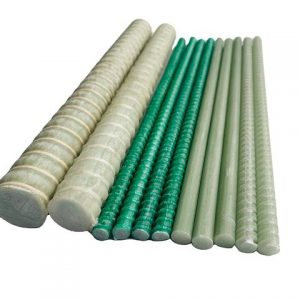- May 29, 2024
- Posted by: wellcoindustries
- Category: Rebar
Fiber Reinforced Polymer (FRP) rebar is increasingly being used in construction due to its unique properties and benefits over traditional steel rebar. Understanding the specifications of FRP rebar is crucial for architects, engineers, and construction professionals to ensure its effective application in various projects. This article will outline the key specifications of FRP rebar, making it easier for you to make informed decisions for your construction needs.

1. Material Composition
FRP rebar is made from a combination of high-strength fibers (usually glass, carbon, or basalt) and a polymer resin matrix. The fibers provide strength, while the resin binds them together, creating a durable and robust material. The most common types of fibers used are Glass Fiber Reinforced Polymer (GFRP), Carbon Fiber Reinforced Polymer (CFRP), and Basalt Fiber Reinforced Polymer (BFRP).
2. Tensile Strength
One of the most notable advantages of FRP rebar is its high tensile strength. Depending on the type of fiber used, the tensile strength can range significantly. For instance, GFRP rebar typically has a tensile strength of around 600 to 1200 MPa, whereas CFRP rebar can exceed 2000 MPa. This makes FRP rebar particularly suitable for applications where high strength is required.
3. Corrosion Resistance
FRP rebar is highly resistant to corrosion, unlike steel rebar which can rust and weaken over time when exposed to moisture and chemicals. This property makes FRP rebar ideal for use in harsh environments, such as marine structures, bridges, and chemical plants. The corrosion resistance of FRP rebar ensures a longer lifespan and reduced maintenance costs for the structures where it is used.
4. Lightweight
Another significant specification of FRP rebar is its lightweight nature. FRP rebar is approximately one-fourth the weight of steel rebar, which makes it easier to handle and transport. This lightweight property can lead to lower labor costs and increased efficiency on construction sites.
5. Thermal and Electrical Insulation
FRP rebar is a non-conductive material, providing excellent thermal and electrical insulation. This characteristic is particularly important in applications where electrical conductivity needs to be minimized, such as in power plants and certain industrial settings.
6. Modulus of Elasticity
The modulus of elasticity of FRP rebar is generally lower than that of steel rebar. For example, GFRP rebar has a modulus of elasticity in the range of 40 to 60 GPa, compared to steel rebar which is around 200 GPa. This means that FRP rebar can experience more deformation under load, which should be considered during the design phase to ensure structural integrity.
7. Sizes and Shapes
FRP rebar is available in various sizes and shapes to meet different construction requirements. Common diameters range from 4 mm to 32 mm, with different surface profiles to enhance bonding with concrete. Manufacturers often produce FRP rebar in standard lengths, but custom sizes can also be ordered to suit specific project needs.
8. Standards and Certifications
To ensure quality and consistency, FRP rebar is manufactured according to various industry standards and certifications. In North America, the American Concrete Institute (ACI) provides guidelines for the use of FRP rebar in construction. Additionally, organizations like the ASTM International and the CSA Group have developed standards that cover the materials, manufacturing processes, and performance of FRP rebar.
Conclusion
Understanding the specifications of FRP rebar is essential for its effective application in construction projects. Its high tensile strength, corrosion resistance, lightweight nature, and insulating properties make it a valuable alternative to traditional steel rebar. By considering these specifications, construction professionals can ensure that they are using the right type of FRP rebar for their specific needs, leading to more durable and cost-effective structures.
By adhering to these specifications and industry standards, FRP rebar can be successfully integrated into various construction projects, providing long-term benefits and enhanced performance.
